Browse different: why MinimServer stands out from the UPnP crowd
January 31, 2018 in digital music by Dan Gravell
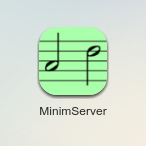
For the DIY digital audio enthusiast, UPnP is often the bedrock of a home music network. It's an industry standard that defines how media (that's music to us) sources and playback devices interact. It defines how libraries can be browsed, and how playback itself can work.
Because UPnP is a standard, it means (in theory) you can choose which UPnP source (Media Server), controller (Control Point), or playback device (Renderer) you like. In practice it can be a bit more tricky than that, with some servers supporting different capabilities. Nevertheless, without UPnP we'd have a much more closed choice of software to construct our home music networks.
The downside of standards is uniformity. If a standard is overly prescriptive, it means the software writers have less leeway to be creative in how their software works. And, indeed, many UPnP servers are pretty similar, offering similar browsing capability.
MinimServer is different. Broadly, most UPnP media servers approach library browsing from the traditional artist / album / track hierarchy. MinimServer, on the other hand, has been built in a more flexible fashion: using its intelligent browsing mechanism you can select genres, composers and other fields to progressively narrow down the results across the library.
You could see this as a bottom-up approach, rather than the top-down driven approach of a hierarchy. Where it really shines is when music wants to escape the industry release-oriented approach. Obvious examples are classical music and compilations from any genre; but more generally it benefits any information architecture that is not hierarchical.
You could almost say MinimServer enables the folksonomy of your music collection. The secondary advantage of this approach is that it is suited to large collections because of the opportunity in larger collections to have more diverse metadata; basically, the larger the collection, the more possible values your tags may have and so the more difficult to find music in a strict hierarchy.
Like bliss, MinimServer is written as a server side app and, also like bliss, is available for NAS devices like Synology and QNAP (as well as other platforms).
Getting practical
There's only one issue with this theoretically flexible approach: it can lead to complexity when the range of metadata values is wide. This may be due to simply incorrect data; or inconsistencies in how data is stored. MinimServer takes the view that existing metadata is presented in its raw form, so such inconsistencies could present a problem.
Here's a simple example: case sensitivity, in this case for genres. As there are multiple genres defined for the same basic genre, this makes selection and browsing more difficult. In addition there's a synonym genre which uses an ampersand to differentiate:
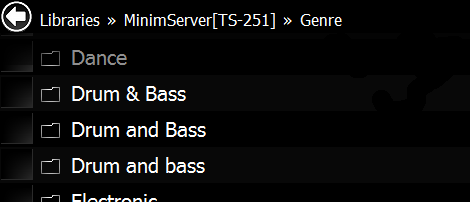
Another in-your-face one is where different aliases or subtle changes of spelling of artist names are used:

This means the albums for a particular artist are broken up.
A more subtle one is where data is missing, and so the full power of intelligent browsing is not realised. We have an album of Rat Pack tracks which have an "Unknown" genre. This means two things:
- We can't browse all tracks that are in their rightful genre.
- Browsing by, say, Dean Martin's tracks, and then genre, will show a fragmented genre list.

If only there was a software application that could fix incorrect, inconsistency and incomplete musical metadata... oh wait, there is!
blissful MinimServer
bliss and MinimServer both run on NAS devices (and other platforms besides). So I thought it would be fun to use a QNAP NAS for this walkthrough. Generally speaking, once installed both software behave pretty much the same regardless of the platform.
To install bliss on QNAP, take a look at the QNAP Music Manager page. For MinimServer, take a look at the MinimServer QNAP installation instructions.
We saw above how MinimServer's powerful browsing feature can mean inconsistent tags make for a more confusing browsing experience. The main problems were:
- Inconsistent capitalisation
- Incorrect spelling of artist names
- Missing genres
So let's enable bliss's tag correction and consistency rules to ensure these issues disappear and make for easier, faster, less confusing browsing. We'll also enable the cover art rule and customise it for MinimServer.
With bliss running, click the cog at the top-right and click the ON/OFF button to enable the Cover Art rule. MinimServer's cover art requirements state:
- Image files can be called
folder,coveror be named after the album or track filename - Image files must be JPEG or PNG (embedded images can also be BMP or GIF)
- Embed images
In practice, it's often simplest and most portable, in most use cases, to choose folder as the filename.
Encoded in bliss, that means:

And:

Enabling the cover art rule also means missing embedded or separate image file artwork will be looked up by bliss; using existing art first of all (e.g. embedding an existing folder.jpg into the associated music files) and if there's no art at all, finding it online.
Now let's fix those tag inconsistencies. Click the ON/OFF button for Tags and enable the Tag accuracy rule to look for inconsistent artist names and missing genres:
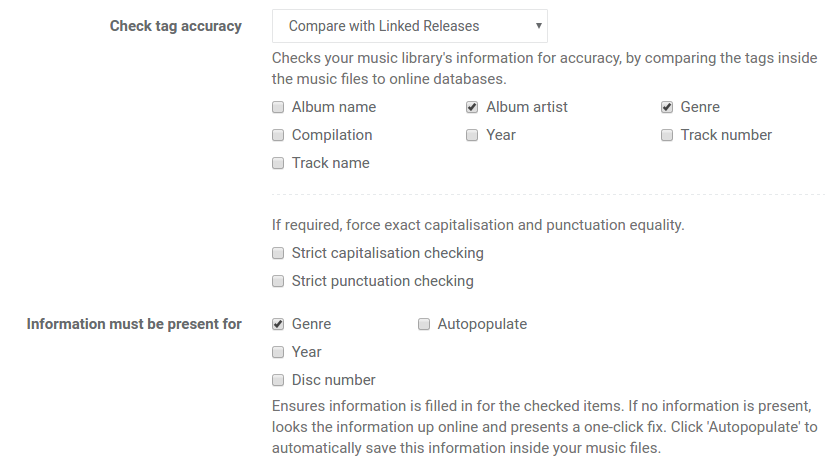
We also had capitalisation problems with genres previously, so let's add a capitalisation rule:

Let's now click Apply rules. At this point, bliss starts assessing your music, and showing where music is Compliant (the music obeys the rules we just defined) or Non-compliant.
The first inconsistency we wanted to fix was capitalisation of "Drum and bass". Sure enough, the album concerned reports this. Click the Set GENRE to ... button to fix the genre:

The next one was mis-spellings of artists. Here, bliss has identified the canonical spelling of 4hero and identified where an existing album had an incorrect artist name. For bonus points it has also identified the genre is yet another synonym of Drum and Bass and offers to change it!
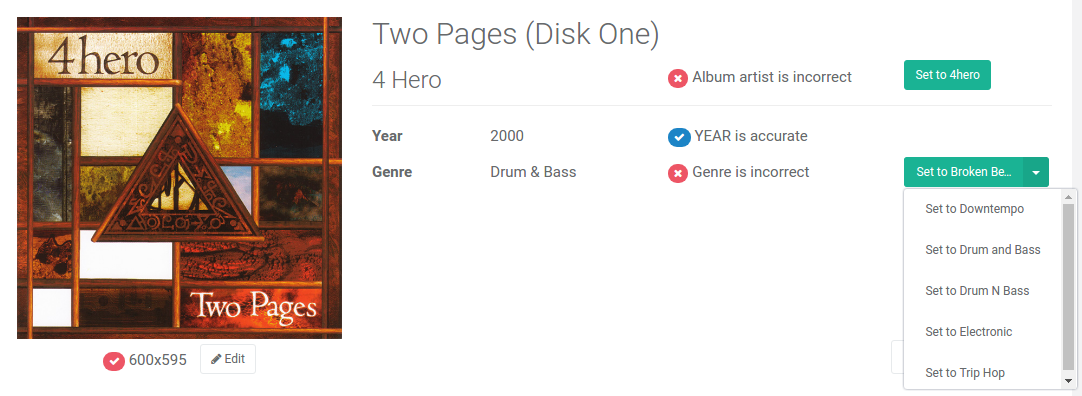
Finally - missing genres. The Eee-O-11 album was identified by bliss to have no (real) genre, and it has suggested it is a "Jazz" record:

Now... that's debatable. You could argue in a broad sense it is Jazz, but I want something more specific, so I can use the manual Edit button to set it to Swing:

Back to MinimServer
Now we've fixed those inconsistencies, let's take a look at MinimServer. We'll need to rescan the library first.
Once that's done, we can see music browsing is a much cleaner experience (and we've also filled in some missing artwork). The genres are cleaner:

Artist browsing have fewer semi-duplicated entries:

And finally we can view all artists with tracks from the Swing genre:
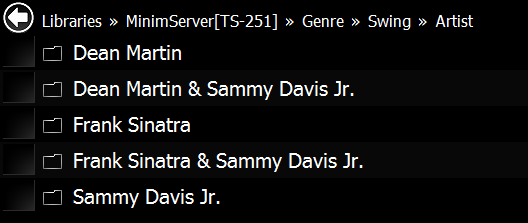
Hope this makes your MinimServer browsing a cleaner experience!

